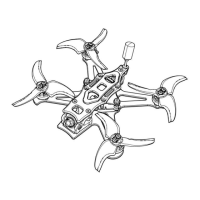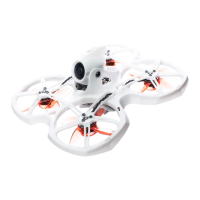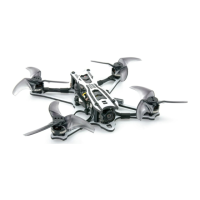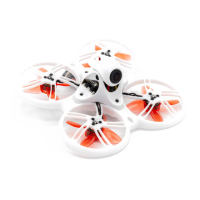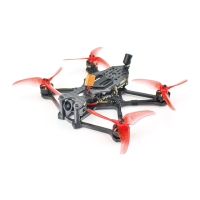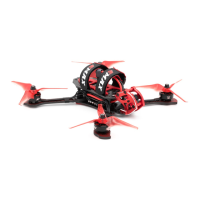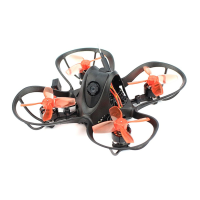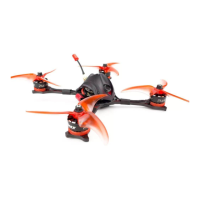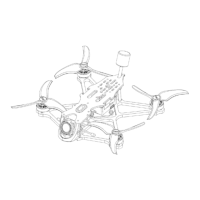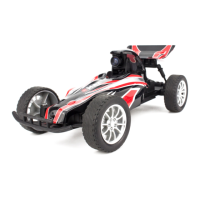Tinyhawk III Plus
Straight Flight
To learn how to pilot the Tinyhawk III Plus, start by flying it within line of
sight (without wearing video goggles). Power on the Tinyhawk III Plus and place
it in a safe and open area. Start the Tinyhawk III Plus and use the left stick to
raise the throttle to hover. Begin by attempting to maintain a stable altitude.
Control the throttle pitch with your thumbs to control the elevation of the
aircraft, allowing the Tinyhawk III Plus to fly smoothly. It takes practice to
become proficient, so repetition is necessary to achieve mastery.
Advanced Flying - First-Person View (FPV) Flight
Once you have a certain level of operational proficiency in flying, you can try
flying using video goggles (FPV goggles). Make sure that the Tinyhawk III Plus
and the video goggles are on the same VTX channel. Choose a spacious and
safe location. Apply the experience gained from regular flight of the Tinyhawk III
Plus to your operation. Use controlled throttle to maintain a slow and level flight,
making it easier to learn FPV flying. As you gain more flying experience, you will
be able to maneuver the Tinyhawk III Plus in the air like driving a car.
The video goggles display information (OSD) from the Tinyhawk III Plus
camera's image feed. The OSD shows essential details such as flight time and
battery voltage. Always keep an eye on these numbers during flight to gauge
the remaining battery voltage. The Tinyhawk III Plus can fly for a maximum of 4
minutes. Land the Tinyhawk III Plus when the battery reaches 3.2V. It is not
recommended to let the battery voltage drop below 3.2V, as this can damage
the battery.
Warning: Maintain controlled altitude while flying, avoid making sudden stick
movements, as it can make the aircraft difficult to control. Do not let the battery
voltage drop below 3.2V. If you lose sight of the aircraft, activate the motors to
produce a beeping sound to help locate the Tinyhawk III Plus Freestyle!

